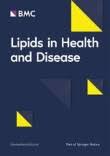Patterns of changes in serum lipid profiles in prediabetic subjects: results from a 16-year prospective cohort study among first-degree relatives of type 2 diabetic patients
Authors
Affiliations
Abstract
Background: Lipid abnormality pervasively is associated with the risk of type 2 diabetes mellitus. To the best of our knowledge, there is no study that has examined the longitudinal changes in a wide range of serum lipid profiles in prediabetic subjects in association with the risk of developing type 2 diabetes mellitus in the future. This study aimed to identify the patterns of changes in lipid profiles over time in prediabetic patients and to classify these subjects in order to highlight which patients are at high risk for future diabetes.
Methods: This prospective 16-year (2003-2019) cohort study was conducted among 1228 prediabetic subjects. The study subjects were followed, and the changes in their lipid profiles, including triglycerides, cholesterol, high-density lipoprotein cholesterol, and low-density lipoprotein cholesterol, were evaluated. The latent Markov model was used for data analysis.
Results: The mean (standard deviation) age of subjects was 44.0 (6.8) years, and 73.6% of them were female. The latent Markov model identified two latent states of subjects in terms of changes in lipid profiles: a low tendency to progress diabetes / high tendency to progress diabetes (74, 26%). The latent Markov model showed that the transition probability from a “low tendency to progress diabetic” state to a “high tendency to progress diabetic” state was lower than the transition probability from “high tendency to progress diabetic” state to “low tendency to progress diabetic” state.
Conclusions: The present study showed that more than half of the first-degree relatives of T2DM had approximately normal lipid profiles and that these patients are more inclined to transition from a higher- to a lower-tendency diabetic state. These findings confirm the value of regular screening of first-degree relatives of T2DM. Moreover, preventive intervention strategies are recommended to reduce their risk of developing T2DM.
Keywords: Cholesterol; Cholesterol HDL; Cholesterol LDL; Latent Markov model; Prediabetes; Triglycerides; Type 2 diabetes.

